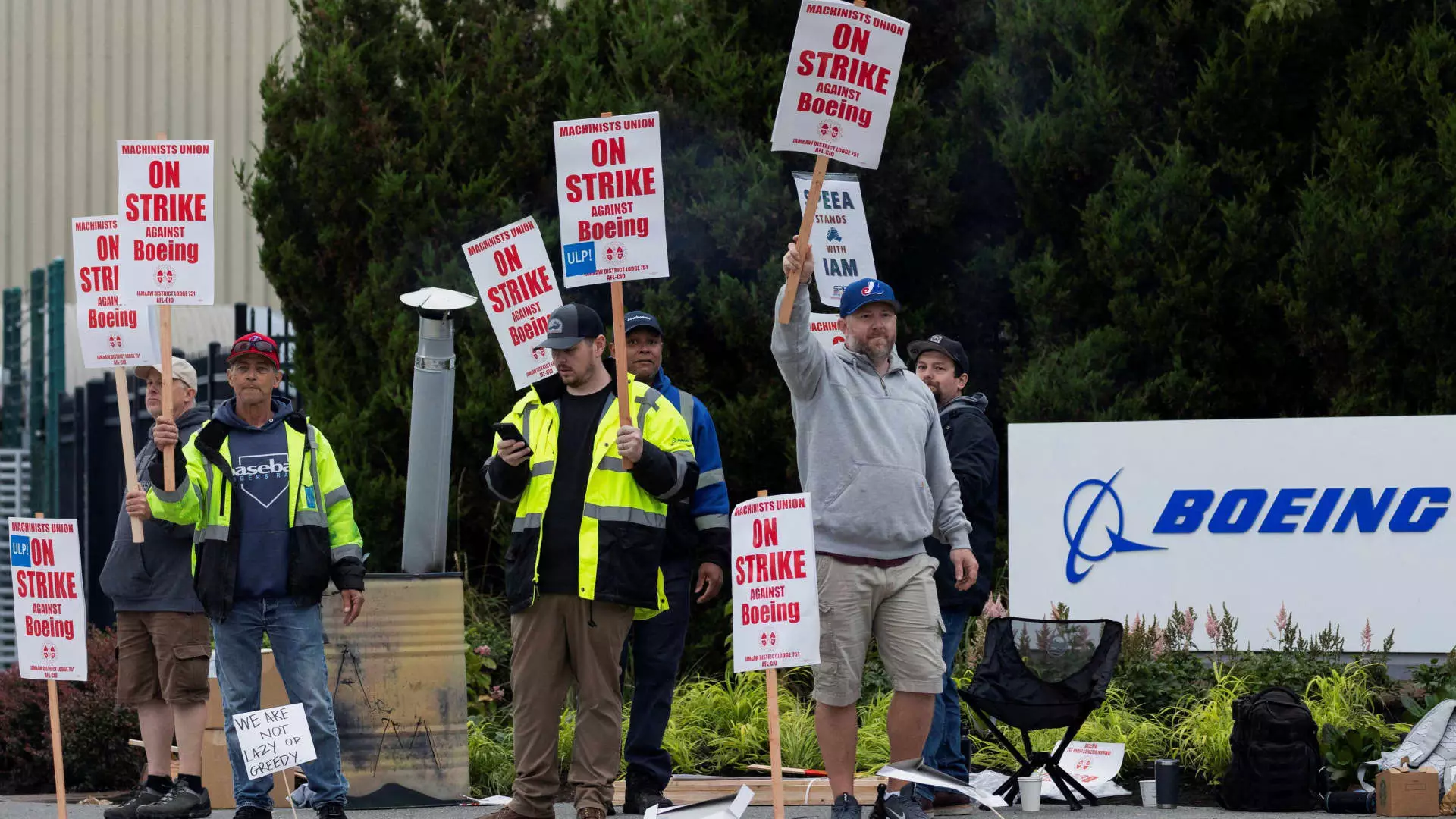Boeing has been undeniably grappling with financial turmoil in recent years, exacerbated by an ongoing machinist strike that has entered its second week. As the company struggles to manage its commitments amidst demands for better pay and working conditions, the implications of this strike are increasingly significant. With more than 30,000 machinists walking off their jobs following a decisive 96% vote against a tentative agreement, the stakes rise for both the labor force and the corporate structure of this aerospace giant.
The current labor conflict has led to heightened anxieties not just for the company, but also for the workers who have been bolstered by union support. As picketers outside the Renton factory have demonstrated, the machinists are committed to advocating for their financial needs in a region where the cost of living has skyrocketed. The challenges of 2023 are compounded by diminishing returns; Boeing hasn’t made a profit since 2018, which raises significant concerns about its ability to remain competitive in the aerospace market.
Personal sacrifices among machinists are evident and reflect the broader economic climate. Many employees have turned to side jobs—whether in landscaping, furniture moving, or logistics—to weather the financial impact of the strike. The median home price in Washington state has surged to around $613,000, a staggering 142% increase over the last decade, outpacing national averages. Faced with these harsh economic realities, many machinists feel compelled to take action.
Employees like Jake Meyer, a Boeing mechanic, illustrate the emotional strain of this strike. He speaks candidly about proud labor but faces the harsh truths of unaffordable housing. Such dilemmas are not isolated incidents; many workers are relying on union funds of $250 per week while also projecting their ability to sustain their finances indefinitely. The mounting pressure to achieve a more favorable contract while also maintaining their livelihoods illustrates the precarious position these workers find themselves in.
The financial toll from the strike is staggering. Estimates suggest that Boeing could bleed as much as $50 million a day due to halted production and delayed deliveries to customers. This production halt cascades through Boeing’s vast supply chain, prompting suppliers to pause shipments and exacerbating the company’s difficulties. Despite the impact on core production lines such as the 737 Max, the company still operates its non-union facility in South Carolina; however, the full recovery and growth of Boeing’s operational capability rely heavily on resolving this labor dispute.
Adding to Boeing’s challenges, the company’s debt stands at a concerning $60 billion, compounded by previous setbacks including a significant safety incident involving the 737 Max earlier this year. All of this raises alarm bells among credit agencies, who warn of potential downgrades in Boeing’s standing if substantive progress is not made in negotiations with the union.
Negotiation talks have hit a frustrating stalemate, leaving union members feeling unvalued amid unclear commitments from Boeing. The company’s latest wage offer, 25% over four years, has not been well-received by the workers. The International Association of Machinists and Aerospace Workers District 751 highlights a demand for higher wages—closer to the 40% increase they initially proposed—alongside benefits such as annual bonuses and the restoration of pensions.
The leadership at Boeing, embodied by new CEO Kelly Ortberg, is tasked with bridging this gap while simultaneously addressing internal financial issues. Despite the frustration expressed by both sides, the urgency to reach an agreement becomes clear as health benefits for strikers approach a cutoff date.
Historical Context and Future Implications
Comparatively, the current situation reflects Boeing’s past labor conflicts, such as the 2008 strike that lasted two months. However, the context is notably different now. The tight labor market poses additional hurdles for the company as retention and recruitment have become critical. Skilled labor in aerospace is elusive, particularly after mass layoffs during the pandemic.
Past strikes have demonstrated that successful negotiations can yield tangible benefits for workers. Nevertheless, for Boeing, achieving agreement in the current climate means not only addressing workers’ demands but also reshaping its operational strategies to emerge more resilient in a competitive landscape.
As negotiations grind on, the Biden administration’s optimistic stance encourages both the company and the union to find common ground. The outcome of this strike will undoubtedly have lasting implications for Boeing, both financially and in terms of employee relations. How the situation unfolds will serve as a vital case study in labor management and corporate responsibility in an era marked by economic uncertainty and social advocacy.

